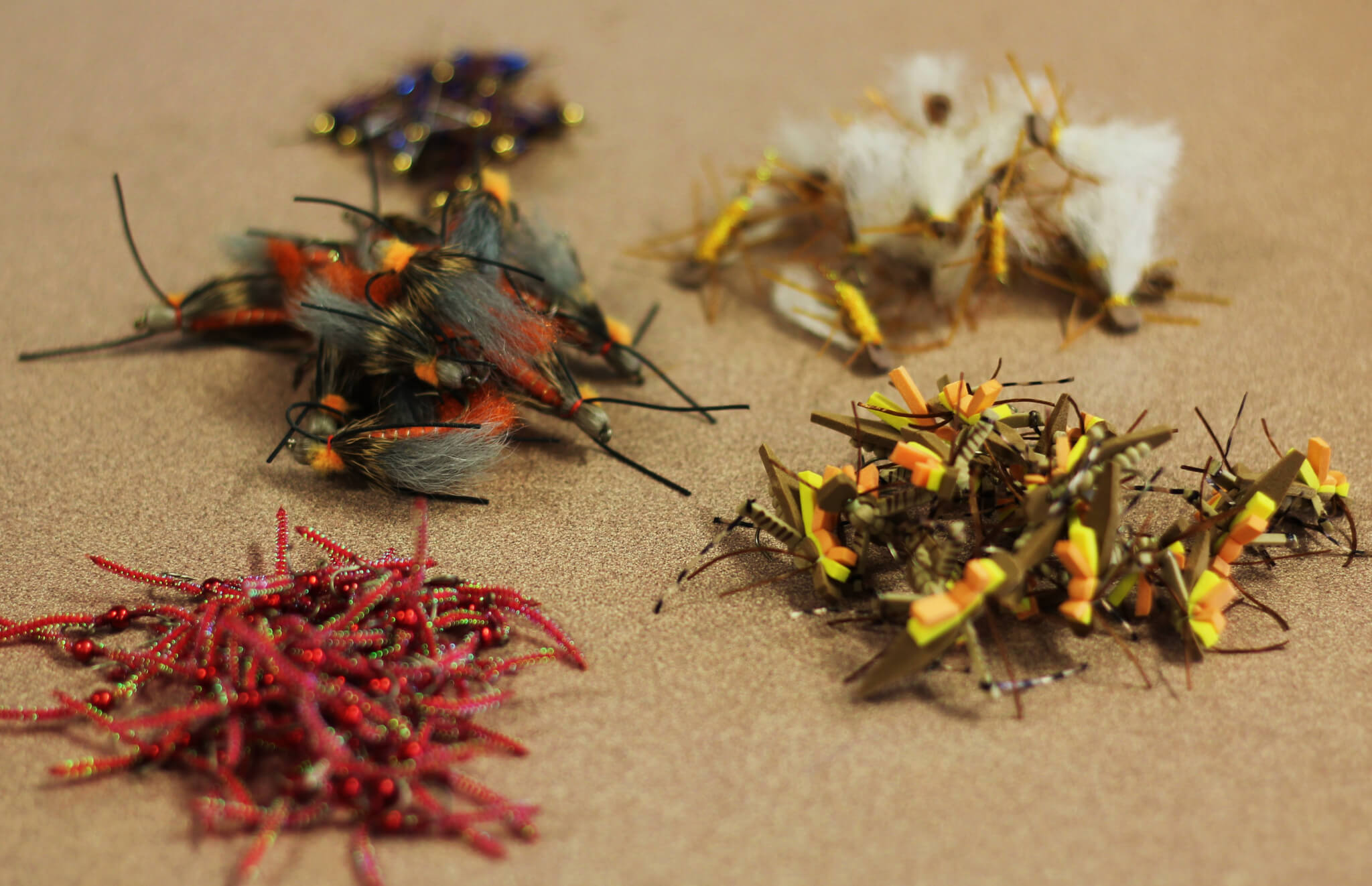5 Tips to Fly Fishing Mouse Patterns

-Tip #1 Heavy Tippet
Mouse fishing in Montana is often done in the middle of the night, when casting accuracy becomes an issue. From a boat, you cast towards shore and depth perception becomes an issue- fish from shore and your back cast is the issue. From a boat, I’ve definitely cast towards shore thinking I am just off the bank, only to find out I’m 20 feet up the bank hooked to a Ponderosa. Heavy tippet allows you to rip out of most snags on the bank. We’re not talking 2 or 3x either, more like 20-30lb tippet. If you’re fishing mice during daylight, 1X or 2X works, but at night the fish aren’t leader shy. You’ll thank us later when you don’t donate 20 mouse patterns to the bank!
-Tip #2 Strip Set
Mouse fishing is exciting!! When a big Montana Brown Trout comes up and smashes your mouse, the first reaction is yank, and yank hard. However, when you miss with a normal trout set, you bring the fly out of the water and out of the fish’s range. When you see or hear the fish eat, try strip setting. Strip setting is pulling the line with big strip, without lifting the rod tip. Many times Trout slash at a mouse pattern, or just plain miss the eat. If you miss the first strip set, the fly is still in range and still in the water. By not jerking the fly out of the water, the fish has another shot at eating your fly. These are aggressive fish, they will come back to eat if the fly is still in range. This may be the most important tip when it comes to fly fishing Mice. Not easy to keep calm but this will improve your hookup rate.
-Tip #3 First Light
Night fishing is an adventure. It’s exciting, fun and way interesting, but it’s not always convenient, and has its obvious dangers. You may hear us talking about night fishing from the boat a lot around Missoula, Montana, but realize we pick easier stretches of the river to float. Our guides and fly shop staff know the river like the back of their hand- many have been floating Missoula rivers their entire lives. We do not recommend floating unless you are very, very, very familiar with the stretch. Wade fishing also has its dangers- scout out your area before tramping around in the middle of the night. When night fishing isn’t an option, we get on the water at first light, around 4:30am or so, to float on stretches that are a little more technical. Of course you can see better, but sometimes the first few hours of light can be the best mouse fishing. At first light, the trout are still in their nocturnal lies, and will take mice readily. Once the mousing slows down, switch to streamers or dries to finish out your day.

-Tip #4 Go Big At Night
The darker it is, the bigger mouse pattern you will want to fish. Flies that push a lot of water are key to grabbing the fish’s attention with moonless or cloudy nights. You want your fly to make a commotion while fishing mice. We often fish flies that are the size of a small Chipmunk at night. If you’re fishing twilight (evening or morning) then drop down in size. Choose a pattern that pushes less water and skitters well in low light periods.
-Tip #5 Listen
In daylight, you’ll see your mouse get eaten. The take is NOT subtle! In complete darkness, you need to use other senses to identify the take. Sometimes the moonlight is at just the right angle for seeing the take, but most of the time you won’t see anything at all. Listen carefully for the strike, which are typically aggressive, and react accordingly. Even trout big enough to sip a mouse still make some kind of noise as they eat. Keep your line tight in case you don’t hear anything, this way your sense of feel has your back, but keep your ears open as well.

